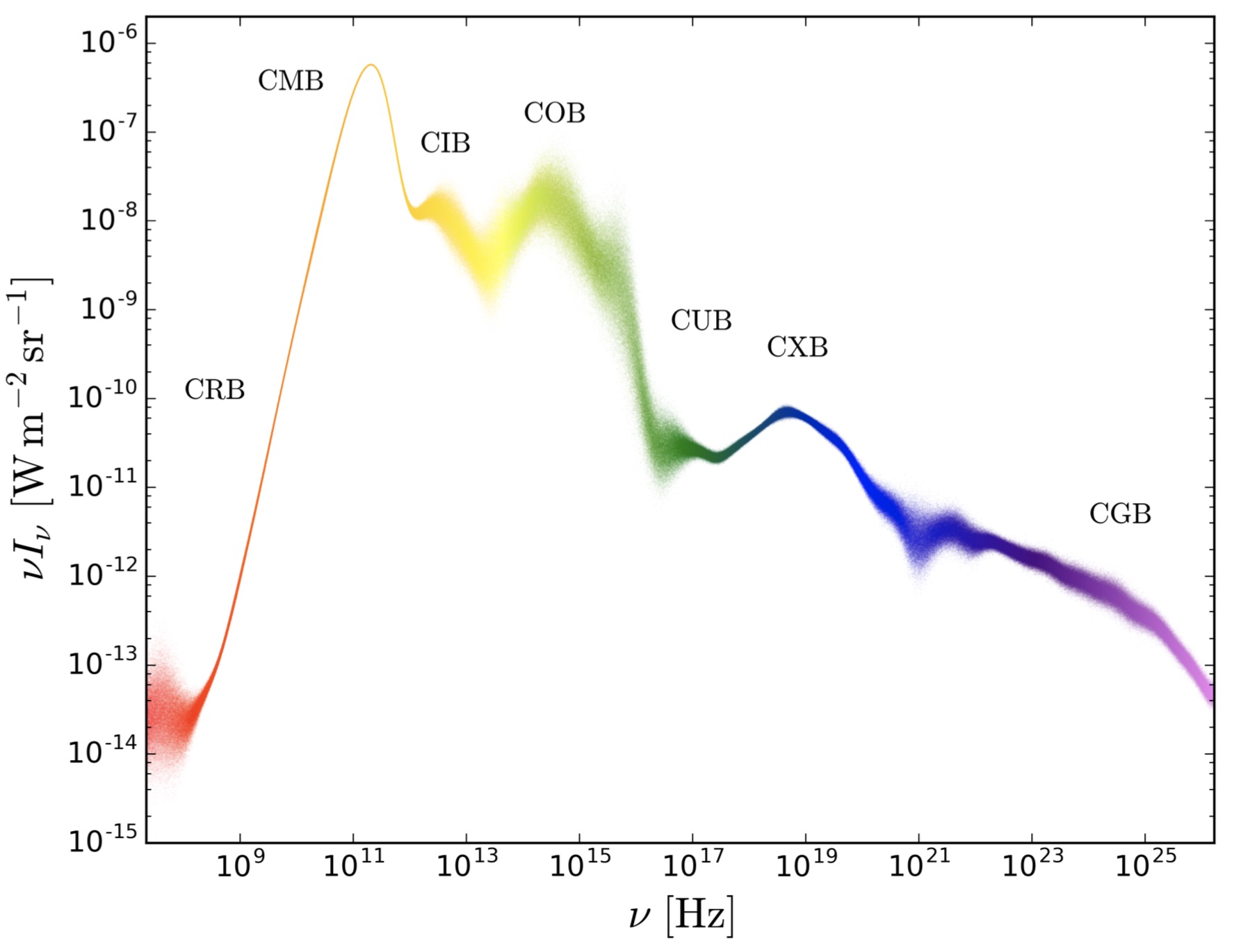The cosmic background (CB) radiation, encompassing the sum of emission from all sources outside our own Milky Way galaxy across the entire electromagnetic spectrum, is a fundamental phenomenon in observational cosmology. Many experiments have been conceived to measure it (or its constituents) since the extragalactic Universe was first discovered; in addition to estimating the bulk (cosmic monopole) spectrum, directional variations have also been detected over a wide range of wavelengths. Here we gather the most recent of these measurements and discuss the current status of our understanding of the CB from radio to $\gamma$-ray energies. Using available data in the literature we piece together the sky-averaged intensity spectrum, and discuss the emission processes responsible for what is observed. We examine the effect of perturbations to the continuum spectrum from atomic and molecular line processes and comment on the detectability of these signals. We also discuss how one could in principle obtain a complete census of the CB by measuring the full spectrum of each spherical harmonic expansion coefficient. This set of spectra of multipole moments effectively encodes the entire statistical history of nuclear, atomic and molecular processes in the Universe.
Hill, Ryley; Masui, Kiyoshi W.; Scott, Douglas
2018, Applied Spectroscopy, 72, 663
http://adsabs.harvard.edu/abs/2018ApSpe..72..663H
